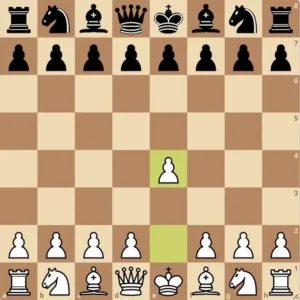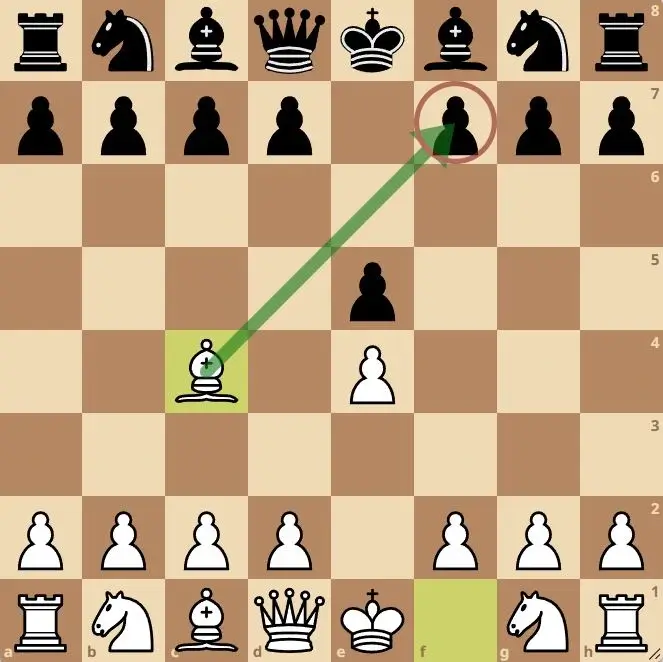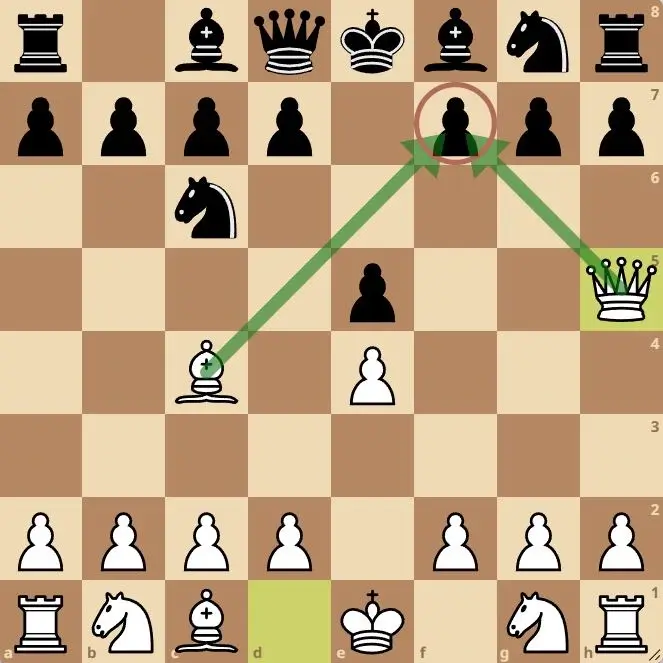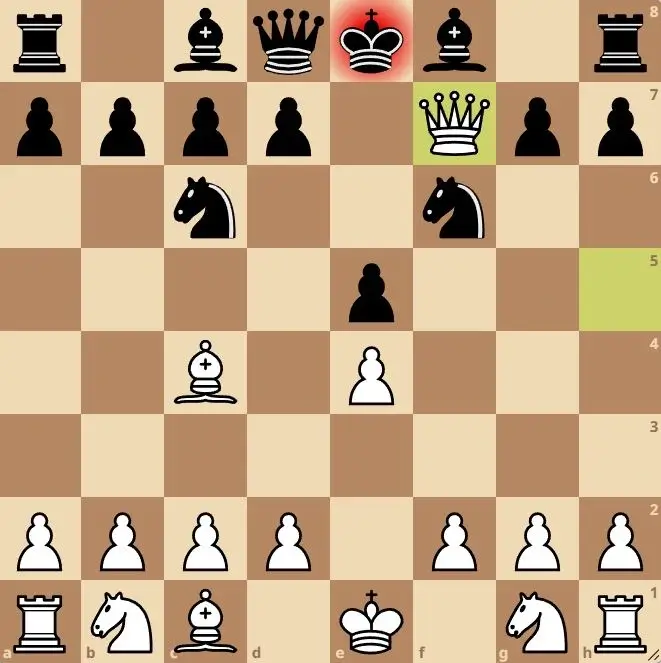Introduction
The checkmate in four moves, also known as Scholar’s Mate, is one of the most popular and easy checkmates for beginners. It’s a great way to learn how to deliver checkmate quickly while practicing piece coordination and spotting weak points.
Let’s face it – few things in chess are as satisfying as delivering a swift checkmate before your opponent even knows what hit them. It’s a moment every beginner dreams of: “I won in four moves!”
This is for beginners – those who are just starting out and eager to understand quick wins, sneaky traps, and how to recognize (or avoid) them in their own games.
This blog will walk you through the famous checkmate in four moves – Scholar’s Mate.
Checkmate in Four Moves: The Scholar’s Mate
This classic checkmate in four moves aims directly at one of the weakest spots in Black’s position: the f7 square, which is only defended by the king at the start of the game.
Here’s how it unfolds:
1.e4
White opens the game by advancing the king’s pawn two squares. This opens lines for the queen and bishop – two key attackers in this tactic.

1…e5
Black responds symmetrically, also opening central space.
2.Bc4
White develops the bishop to c4, eyeing the vulnerable f7 pawn.

2…Nc6
Black develops the knight – common and seemingly solid.
3.Qh5
The queen comes out early to h5, placing immediate pressure on f7 and threatening Qxf7# if Black is careless.

3…Nf6
If Black plays naturally without noticing the trap…
4.Qxf7#
Checkmate! The game is over, and White wins in just four moves.

Why It Works
- The f7 square is weak: At the beginning of the game, f7 (for Black) is protected only by the king. This makes it a prime target for simple chess checkmate patterns and early tactical blows beginners can learn to spot.
- Rapid piece development: White brings out the bishop and queen quickly to coordinate a threat.
- Surprise factor: Many new players don’t expect such an early attack and may not see it coming until it’s too late.
Common Defenses & How It Fails
The Scholar’s Mate doesn’t work against experienced players, who are familiar with the trap and know how to counter it:
- 3…g6: Prevents the checkmate and prepares to fianchetto the bishop.
- 3…Qe7: Defends the f7 square and neutralizes the threat.
The risk:
Playing your queen too early can backfire. If your opponent defends correctly, your queen might become a target and you could fall behind in development or lose material.
Key Takeaways
Checkmate in four moves isn’t about overwhelming your opponent with brute force – it’s about spotting the right opportunity and executing with precision.
- The checkmate in four moves is an easy checkmate tactic for beginners, but it’s not a long-term strategy. Use it wisely and selectively to sharpen your tactical thinking.
- Understanding why it works – weak squares, early development, overextension – will deepen your tactical awareness and help you recognize (or avoid) similar traps.
- The goal isn’t just to win quickly – it’s to sharpen your instincts and build a stronger foundation in recognizing threats and vulnerabilities.
Practice Tips
Want to try the checkmate in four moves out? Here’s how you can practice effectively:
- Use online tools and platforms like Chess.com, Lichess, or ChessTempo. Try both playing games and puzzle modes.
- Play as both attacker and defender. See how it feels to deliver Scholar’s Mate – and how to stop it cold.
- Watch for simple checkmate patterns in your own games. Early threats to f7 or f2, premature queen moves, and undefended weaknesses come up more often than you think.
Conclusion
You won’t always checkmate in four moves – and experienced players will rarely fall for these kinds of traps. But learning it is still incredibly useful.
It teaches you how to think tactically, how to exploit weaknesses, and how to use your pieces in harmony.
Master the pattern, and you’ll not only win a few fast games – you’ll become a more dangerous and aware player, ready to set traps of your own.
Frequently Asked Questions
1. Is the Scholar’s Mate a reliable strategy to win games?
No, it only works against beginners who are unfamiliar with the trap. Experienced players can easily defend and even take advantage of early queen development.
2. How can I defend against the Scholar’s Mate?
Play moves like 3…g6 or 3…Qe7 to defend the f7 square. Avoid passive or slow development that leaves you vulnerable.
3. What should I do if my Scholar’s Mate attempt fails?
If your opponent defends well, retreat your queen safely, continue developing your pieces, and shift to a solid middlegame strategy. Don’t panic if the early tactic doesn’t work.
4. Are there other quick checkmate patterns I should know?
Yes! You can learn patterns like Fool’s Mate (the fastest checkmate possible) and other traps like the Fried Liver Attack or Legal’s Mate to deepen your tactical awareness.
5. Why is f7 (and f2) considered a weak square in chess?
Because at the start of the game, these squares are defended only by the king. They’re prime targets for early tactics involving bishops and queens, especially from opponents who know common traps.
